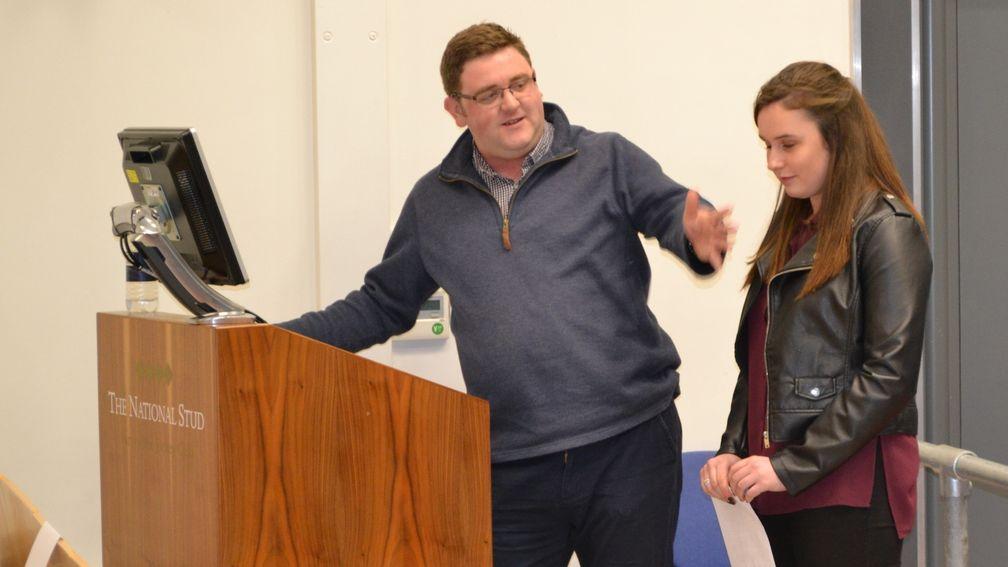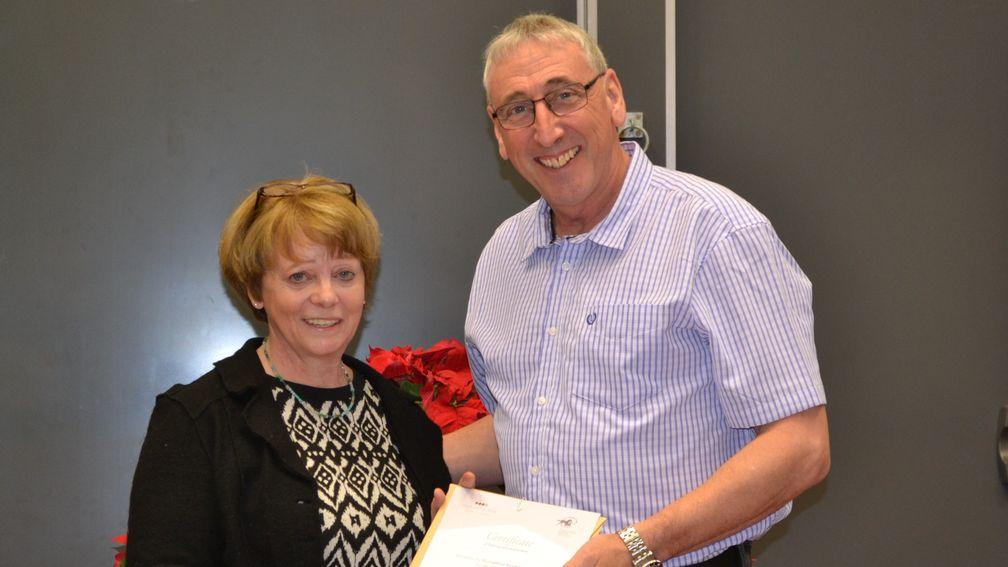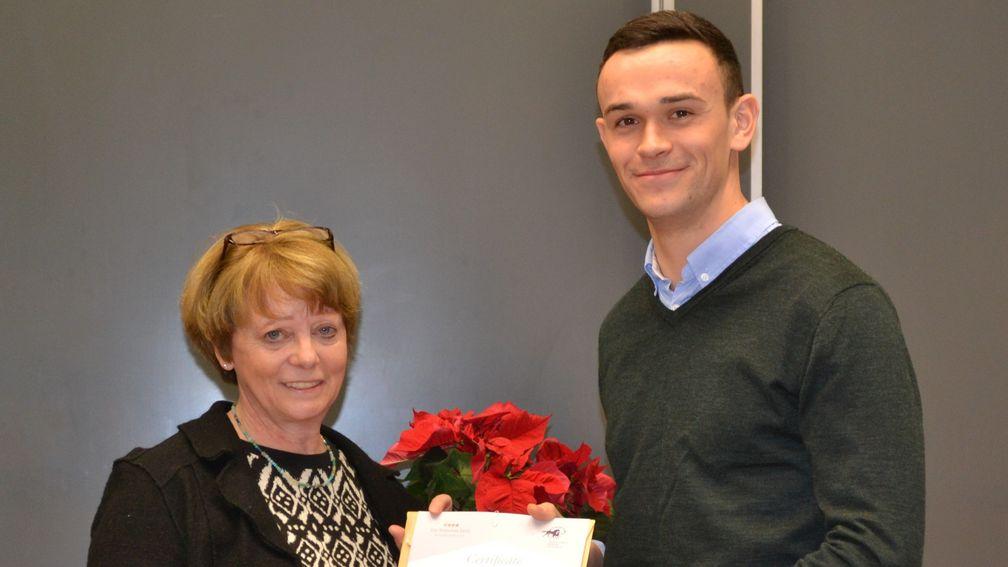National Stud course looking to older students to ease staffing crisis
Martin Stevens speaks to industry newcomers learning to work with horses

In a less hierarchical age, in which tertiary education has been commercialised so that many graduates emerge expecting to recoup the significant financial investment they have made in gaining their diplomas, studs have found it harder to find workers willing to start at the ground level and do a competent job of the basics of caring for horses.
The recruitment crisis in studs has plagued the industry for some years now and the issue reared its head again in the Racing Post this week, as Tracy Vigors described how staffing problems had forced her Hillwood Stud to withdraw from the breeze-up market.
“We've had kids come here who can't pull a mane or load the walker and don't know how to lunge a horse properly,” she said, “yet they don't want to muck out a stable because they've been to college and got a qualification.”
Here is a problem for which there is no silver bullet; we cannot turn back the clock to a more patrician society and, as frustrating as it may be to stud owners, in an open labour market with unemployment levels at historic lows in Britain, workers are entitled – and easily able to – pack their bags and move on if they decide horse husbandry is not to their liking.
But last year the Thoroughbred Breeders' Association and National Stud unveiled a new training programme which, if not a silver bullet, was at least a commendable effort to attract the right sort of person to such roles. Entry to Stud Employment – E2SE for short – is aimed at adults aged 18 to anything; experience with horses is not a prerequisite, as long as the candidates have, according to the course's entry criteria, “a commitment to working hard in the industry and learning on the job [as well as] a positive attitude and the ability to work in a team”.
The initiative takes the place of National Stud courses for 16 to 18-year-olds, which offered precious government funding but also placed restrictions on the curriculum taught, and it fills a gap in the training market for prospective stud workers who may be more mature or changing careers.
So what of the 11 pioneering E2SE students who undertook a nine-week residency at the National Stud learning the ropes in November and December alongside seven on the apprenticeship course, and have now embarked on their longer work placements at various breeding operations around the country?
“The students have impressed everyone who's seen them and we look forward to following them as they all start their breeding industry careers,” says National Stud training director Tabbi Smith.
“The stud has provided apprenticeship training for over 25 years. However we were delighted to have collaborated with the TBA and the Racing Foundation, who have both funded the E2SE training initiative, to provide an innovative access route into full-time stud work for enthusiastic people looking for a second career.”
And the students themselves? Why would they leave behind their previous careers, and what have they made of this stepping stone to stud work?
Age no barrier
At 56, Mick Littlefair is the joint-oldest E2SE student and has made one of the most dramatic changes of direction of any of his peers on the course. The Hartlepool resident has given up a lucrative 40-year career as a pipe-fitter in the construction industry to follow a life-long dream. He is also exactly the sort of grafter any stud owner would give their right arm for.
“I got divorced three years ago and that sort of took the leash off me and I thought, you know what? This is my time now: I'm going to do what I want to do,” says Littlefair.
“It took a while to get over the divorce, I was a bit fed up for a while and then I got pneumonia last year and was very poorly for four months. That was it. I thought I need to get away from heavy industry – the grime, the dust, the welding fumes. I need to do something for me, so what can I do outside in the fresh air?
“I thought I'd see what was available, try and get my foot in the door somewhere, and so I approached a few trainers in the North East. They were sympathetic, patted me on the back, and said why not have a go, but it was difficult with no experience.
“Then I saw this course advertised on the Careers in Racing website and thought I'm going to just apply and see what happens, because it specified 18 up to any age. I assumed I wouldn't get in at 56 – my time's nearly done, why would they want to invest in someone my age? – but I got an application form, sent it off with the CV and then a couple of days later got an email asking me for an interview.

“The interview went really well and a few days later I had a message on my phone to say I'd been accepted. All the other lads at work, they knew it was my dream, they were all patting me on the back and congratulating me.”
Although a lifelong racing fan and highly successful greyhound breeder in the early 2000s, Littlefair admits his contact with horses had hitherto extended only to patting them on the head over a stable door on trainers' open days.
Regardless of that greenness, he says of his time on studs: “I've loved every second working with the horses. I was nervous at first, I'll be honest with you. They're big lumps of things, and when you're in that stable with them for the first time you think, if he decides he doesn't like me there's only one winner. But within the first two weeks that was all gone.”
And having started from scratch, he believes he now has a basic grounding that will stand him in good stead for his placement at Geoff Turnbull's Elwick Stud near Hartlepool.
“There's a lot to try and learn in nine weeks,” he says. “I know I'm nowhere near the finished product; they touch on various subjects, and there isn't time go too far into all of them, but we get a little bit of practical, like how to fit a bridle or rugs, how to groom, and we've been to different studs each week.
"At the start of the course I wouldn't have dreamt of being at the standard I'm at now. For all it's been a little crammed in, I've still learned a lot.”
Littlefair says he has taken a salary cut of around £20,000 to pursue his dream career with horses - “my friends think I'm mad” - but with savings set aside and his partner's wage combined, he wants to end his working life tending to horses in bucolic bliss rather than continue his old career in chemical plants and power stations.
“If I could work at Elwick Stud for the next ten years, I'd be quite happy to do that,” he sums up. “I don't have any ambitions other than to work in that environment; if there was the chance of more training and promotion, I'd never say no that, but otherwise I've no aspirations.
“I'm 56 so if I can stay in this game for ten years and retire with a smile on my face, that'll do me.”
Out of the frying pan . . .
Gavin Teversham, 31, walked away from a 15-year career as a chef to take up the E2SE course.
“I was only a chef because I didn't know what I wanted to do when I left school,” he says. “I really wanted to be a jockey but I was too tall, so ended up in kitchens. I was looking for ways into racing – someone said I could be a racecourse chef but the only thing I would want to do with an oven is put my head in it now; I want to do something new. And then this course came along.”
The long-term ambition for Teversham is to be a trainer, so the National Stud and his placement at Shadwell's Nunnery and Snarehill studs is a tentative first step in that direction.
“The aim is to learn and absorb,” he says. “I can't wait to see the rehab at Snarehill, and generally to see inside such a top operation.”
Regarding the E2SE course, he adds: “The nice thing about this course is that when you get to a certain age you can't go to the British Racing School, and there aren't a lot of other opportunities.
“In fact, it's a good idea for the stud to get us older people as well, because we're not going out on the lash 24/7, we're probably going to be better at getting up early in the morning, and we don't mind doing hard work as we've already had careers. It's a good group to try to target.”
Top of the class
With his whole working life stretching ahead of him, Max McLoughlin, 22, has joined E2SE after graduating from Durham University with a degree in history, which comes in useful for his meticulous study of pedigrees.
Going from student life to stud life must be a shock to the system, surely? No more afternoon lie-ins, for a start.
“I like it,” he contends. “If I wasn't set such a schedule I'd probably sleep in, but I'm thankful we're up early and come 9am you're glad you've done something with your morning.
"I enjoy the physical aspect, it's quite invigorating. It's a hard sell when I tell my friends that I've been mucking out most mornings – they can't wrap their heads around it. But you're also working as part of the team, you can have a laugh.”
Like Littlefair and Teversham, McLoughlin had no hands-on experience with horses.

“It's been a steep learning curve,” he says. “I think I'm doing okay, I wasn't too nervous around the horses, which helps, but I know I've still got a lot to learn and I'll learn a hell of a lot more throughout the season on my placement at Cheveley Park Stud.
“I can fit bridles, rugs, head collars, I can groom and pick the horses' feet out. I've applied poultices and bandages, although I'd want someone to check my work if I was to do it again. But I feel the main thing is just that I've learned to be comfortable around horses.”
Not that he is afraid to get his hands dirty – far from it – but McLoughlin was also nourishing his intellectual side at the National Stud, making good use of the students' library.
“I've been reading the Treasures of the Bloodstock Breeders Review from 1947, where someone is writing what a shame it is that the market at that time was becoming more focused on more precocious horses, which is interesting in terms of the current debate about bolstering the staying division,” he says.
“I''m interested in ignoring fashion, and breeding horses for the racecourse rather than for the sales; if I was to become a stud manager I'd like to think I wouldn't be so confined by the shackles of commercialism.”
In the case of McLoughlin – awarded top student on the course – you feel that whichever studs he works on to gain his practical knowledge could just be benefiting from having a future highflyer in the industry through their hands.
So there you have it: just three among 11 E2SE students from varying walks of life, all enthusiastic to get to grips with stud work given the chance of learning the rudimentary skills.
The personnel who provide the solution to the current staffing crisis in studs are out there, it might just be a case of harnessing them through schemes such as this.
Published on 17 January 2018inInternational
Last updated 12:54, 18 January 2018
- Chaldean popular while ‘smart play’ Almanzor has fee cut by Cambridge Stud
- 'He looks like being a superb stallion' - Too Darn Hot set to return to Australia in 2024 for A$110,000
- Ajay Anne appointed as Arqana's Middle East and Indian representative
- 'The most naturally gifted two-year-old I have ever trained' - blue-blooded Golden Slipper winner Shinzo joins Coolmore roster
- Sun shines for Romanised at Tarbes as Classic hero sires his first winner
- Chaldean popular while ‘smart play’ Almanzor has fee cut by Cambridge Stud
- 'He looks like being a superb stallion' - Too Darn Hot set to return to Australia in 2024 for A$110,000
- Ajay Anne appointed as Arqana's Middle East and Indian representative
- 'The most naturally gifted two-year-old I have ever trained' - blue-blooded Golden Slipper winner Shinzo joins Coolmore roster
- Sun shines for Romanised at Tarbes as Classic hero sires his first winner